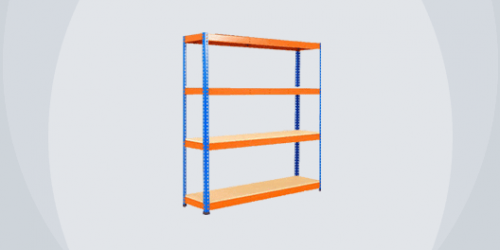How to make your warehouse management more efficient
There is a positive correlation between effective warehouse management and customer loyalty. When your warehouse efficiency declines, so too does your customer retention rate. If your customers choose to switch to a competitor that delivers its products faster, your bottom line will suffer.
Inefficient warehouse operations can lead to long waiting times and inconvenience, which are the main reasons why customers stop buying from your company. This drop in efficiency also results in wasted labour, hence the need to optimise warehouse management.
Even if you don’t have the budget to fully automate your warehouse, there are a few steps you can take to improve your business performance and lower your operating costs.
Optimise warehouse storage
Today, more and more consumers are using online sales services, which means a growing demand for suppliers and an increasing need to expand inventory.
More product variants mean more inventory, as more units are added to your warehouse. Although warehouse space is not as expensive as other commercial premises, it isn’t always easy to expand.
You can therefore start by optimising the space you have available by improving the organisation of your logistics. Build storage upwards and see if it’s possible to add additional aisles by minimising the distance between each aisle. One way to achieve this is to opt for alternating one-way aisles rather than two-way aisles.
Diversify delivery options
You can reduce warehousing costs and shift the burden of inventory by moving goods downstream to resellers. This will prevent you from having to store products for too long in your warehouses, thus limiting storage and transport costs. What’s more, this practice will free up space in your warehouses and thereby increase your storage capacity.
Large retailers have started to shift the burden of inventory to retail outlets. If you have retail outlets capable of fulfilling orders, arrange for your customers to be receiving them on-site.
For e-tailers that don’t have physical stores, consider general online sales platforms. Online platforms are websites that list hundreds of thousands of products from various suppliers. They allow retailers to take advantage of a well-known website to sell their products to the general public. This is therefore a vital asset for boosting sales.
Improve journeys in your warehouse
One of the biggest drains on resources in warehouses is the time spent by pickers moving between orders and locating items for picking.
You can reduce many of these costs by implementing a warehouse management system. Once implemented, this system records all data relating to the goods and their location in the warehouse. As products come into your warehouse, the system determines where these products are placed.
Furthermore, a good supply chain optimises the route taken by order pickers. Based on variables relating to goods and incoming orders, the system provides pickers with an optimal route through the warehouse for improved flow. This significantly reduces the time spent walking and searching for products, which puts a strain on the budget and on the energy levels of employees.
Upgrade the mobile technology in your warehouse
Most companies understand that technology can improve efficiency and increase the speed of order processing. All of this equates to savings, but only if you use the right equipment.
Many professionals imagine barcode scanners when they think of mobile warehouse devices. However, your employees can also use smartphones and tablets with WMS software to receive orders and optimal picking routes. Thanks to WiFi, they can receive the order no matter where they are in your warehouse.
Ergonomic handheld devices are ahead of other mobile solutions. As well as protecting the health of pickers, they can also perform several functions at the same time. They are also equipped with RFID scanners, cameras, and touch screens.
Technology upgrades, including mobile systems and the use of pick-to-light, RFID, and pick-to-voice technologies, reduce picking error rates and thus the costs associated with order returns.
Create an inventory review process
Even if you are shipping products to customers faster than ever before, this does not reduce the waiting time for products in your warehouse.
Optimise your inventory management by looking at metrics. Audit your inventory and identify items that are not moving. The indicators to monitor are as follows:
- The number of days elapsed before the inventory is sold;
- The turnover rate of products in stock;
- The return on investment and how it decreases with the shelf life of the goods;
- The gross margin of products.
Review inventory replenishment practices
As warehousing operations expand, companies often hire a full-time inventory controller. This person is responsible for monitoring inventory levels and managing replenishments to maintain sufficient stocks.
- Unfortunately, manual replenishment practices are prone to human error. Ineffective inventory replenishment can cost you in 2 ways: “Overstocking” of inventory, which remains unsold;
- Insufficient inventory leads to stockouts and lost customers.
Warehouse management systems can help to automate all or part of this process. By setting automatic and periodic replenishment levels in your inventory, you can create triggers for low stock to ensure that more products are ordered. You can also set an inventory limit to reduce the opposite risk: having too many products in stock.





